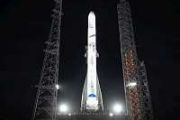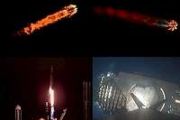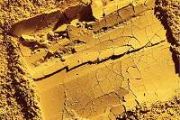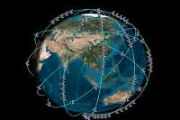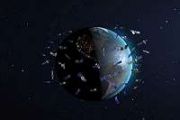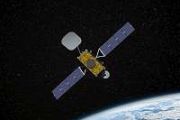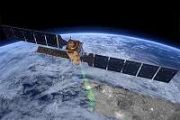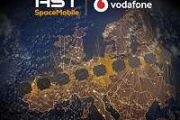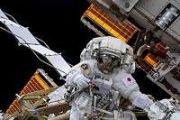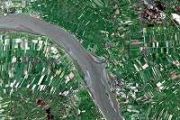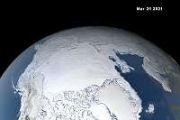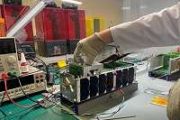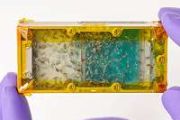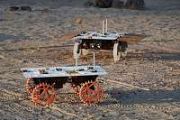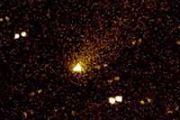
Copernical Team
New images using data from retired telescopes reveal hidden features
 New images using data from ESA (European Space Agency) and NASA missions showcase the dust that fills the space between stars in four of the galaxies closest to our own Milky Way. More than striking, the snapshots are also a scientific trove, lending insight into how dramatically the density of dust clouds can vary within a galaxy.
With a consistency similar to smoke, dust is created by dy
New images using data from ESA (European Space Agency) and NASA missions showcase the dust that fills the space between stars in four of the galaxies closest to our own Milky Way. More than striking, the snapshots are also a scientific trove, lending insight into how dramatically the density of dust clouds can vary within a galaxy.
With a consistency similar to smoke, dust is created by dy Dying stars could seed interstellar medium with carbon nanotubes
Are the Sun's magnetic arches an optical illusion
 From afar, the Sun appears blank and featureless in visible light. But through a solar telescope in different wavelength, it is revealed to be much, much more.
In extreme ultraviolet light, the Sun resembles a rumpled ball of yarn. It teems with giant radiant arcs known as coronal loops soaring through the Sun's corona, or outer atmosphere. Coronal loops are considered fundamental to the S
From afar, the Sun appears blank and featureless in visible light. But through a solar telescope in different wavelength, it is revealed to be much, much more.
In extreme ultraviolet light, the Sun resembles a rumpled ball of yarn. It teems with giant radiant arcs known as coronal loops soaring through the Sun's corona, or outer atmosphere. Coronal loops are considered fundamental to the S Martian meteorite upsets planet formation theory
 Anew study of an old meteorite contradicts current thinking about how rocky planets like the Earth and Mars acquire volatile elements such as hydrogen, carbon, oxygen, nitrogen and noble gases as they form. The work is published June 16 in Science.
A basic assumption about planet formation is that planets first collect these volatiles from the nebula around a young star, said Sandrine Pero
Anew study of an old meteorite contradicts current thinking about how rocky planets like the Earth and Mars acquire volatile elements such as hydrogen, carbon, oxygen, nitrogen and noble gases as they form. The work is published June 16 in Science.
A basic assumption about planet formation is that planets first collect these volatiles from the nebula around a young star, said Sandrine Pero A summer science smorgasbord: Sols 3505-3506
 The difficulty of driving on Martian terrain proves itself once again! Our Sol 3504 drive did not complete successfully, leaving us in basically the same spot as our last plan. Thankfully, all the science we planned executed successfully: check out an interesting Dust Removal Tool result on "Omai" showing erosion-resistant veins beneath the surface and a MAHLI closeup of ChemCam's eye where the
The difficulty of driving on Martian terrain proves itself once again! Our Sol 3504 drive did not complete successfully, leaving us in basically the same spot as our last plan. Thankfully, all the science we planned executed successfully: check out an interesting Dust Removal Tool result on "Omai" showing erosion-resistant veins beneath the surface and a MAHLI closeup of ChemCam's eye where the Researcher awarded $100,000 to identify potential fuel source on Mars
 Associate professor Vincent Chevrier at the U of A Center for Space and Planetary Sciences was awarded $100,000 to study the stability and distribution of clathrate hydrates and clathrasils on the surface of Mars in hopes of discovering a source of methane.
Identifying probable sources of methane would be a critical step in advancing the exploration of Mars, as methane could be utilized to
Associate professor Vincent Chevrier at the U of A Center for Space and Planetary Sciences was awarded $100,000 to study the stability and distribution of clathrate hydrates and clathrasils on the surface of Mars in hopes of discovering a source of methane.
Identifying probable sources of methane would be a critical step in advancing the exploration of Mars, as methane could be utilized to NASA spacecraft observes Asteroid Bennu's boulder 'Body Armor'
 Asteroid Bennu's boulder-covered surface gives it protection against small meteoroid impacts, according to observations of craters by NASA's OSIRIS-REx (Origins, Spectral Interpretation, Resource Identification, Security-Regolith Explorer) spacecraft.
"These observations give new insight into how asteroids like Bennu respond to energetic impacts," said Edward (Beau) Bierhaus of Lockheed Ma
Asteroid Bennu's boulder-covered surface gives it protection against small meteoroid impacts, according to observations of craters by NASA's OSIRIS-REx (Origins, Spectral Interpretation, Resource Identification, Security-Regolith Explorer) spacecraft.
"These observations give new insight into how asteroids like Bennu respond to energetic impacts," said Edward (Beau) Bierhaus of Lockheed Ma Three-stage engine of China's new manned carrier rocket to enter prototype development
 A three-stage engine of China's new generation manned carrier rocket will go to prototype sample development, according to the China Aerospace Science and Technology Corporation.
The long-distance and multiple ignition tests of the engine have been successfully completed, indicating that it is ready to enter the next stage of prototype sample development.
The test examined the key te
A three-stage engine of China's new generation manned carrier rocket will go to prototype sample development, according to the China Aerospace Science and Technology Corporation.
The long-distance and multiple ignition tests of the engine have been successfully completed, indicating that it is ready to enter the next stage of prototype sample development.
The test examined the key te NASA mission discovers 2 Earth-like exoplanets
 NASA announced Wednesday it discovered two rocky exoplanets similar to Earth orbiting a dwarf star near our solar system but are believed to both be too hot to sustain life as we know it.
The space agency's Transiting Exoplanet Survey Satellite mission, or TESS, said the planets are 33 light-years away, some of the closest rocky exoplanets ever found.
"Both planets rate in the to
NASA announced Wednesday it discovered two rocky exoplanets similar to Earth orbiting a dwarf star near our solar system but are believed to both be too hot to sustain life as we know it.
The space agency's Transiting Exoplanet Survey Satellite mission, or TESS, said the planets are 33 light-years away, some of the closest rocky exoplanets ever found.
"Both planets rate in the to Mysterious 'blue blobs' reveal a new kind of star system
 University of Arizona astronomers have identified five examples of a new class of stellar system. They're not quite galaxies and only exist in isolation.
The new stellar systems contain only young, blue stars, which are distributed in an irregular pattern and seem to exist in surprising isolation from any potential parent galaxy.
The stellar systems - which astronomers say appear thr
University of Arizona astronomers have identified five examples of a new class of stellar system. They're not quite galaxies and only exist in isolation.
The new stellar systems contain only young, blue stars, which are distributed in an irregular pattern and seem to exist in surprising isolation from any potential parent galaxy.
The stellar systems - which astronomers say appear thr 










